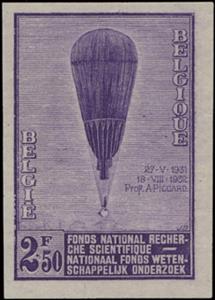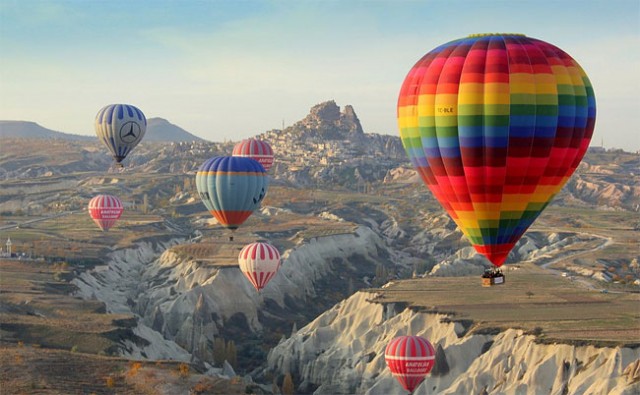Stamp: August Piccard's Balloon (Belgium 1932)
August Piccard's Balloon (Belgium 1932)
26 November (Belgium ) within release Balloon Piccard goes into circulation Stamp August Piccard's Balloon face value 2.50 Belgian franc
| Stamp August Piccard's Balloon in catalogues | |
|---|---|
| Belgium: | Bel: BE 355ND |
Stamp is square format.
Also in the issue Balloon Piccard:
- Stamp - August Piccard's Balloon face value 75;
- Stamp - August Piccard's Balloon face value 75;
- Stamp - August Piccard's Balloon face value 1.75;
- Stamp - August Piccard's Balloon face value 2.50;
Stamp August Piccard's Balloon it reflects the thematic directions:
A hot air balloon is a lighter-than-air aircraft consisting of a bag, called an envelope, which contains heated air. Suspended beneath is a gondola or wicker basket (in some long-distance or high-altitude balloons, a capsule), which carries passengers and a source of heat, in most cases an open flame caused by burning liquid propane. The heated air inside the envelope makes it buoyant, since it has a lower density than the colder air outside the envelope. As with all aircraft, hot air balloons cannot fly beyond the atmosphere. The envelope does not have to be sealed at the bottom, since the air inside the envelope is at about the same pressure as the surrounding air. In modern sport balloons the envelope is generally made from nylon fabric, and the inlet of the balloon (closest to the burner flame) is made from a fire-resistant material such as Nomex. Modern balloons have been made in many shapes, such as rocket ships and the shapes of various commercial products, though the traditional shape is used for most non-commercial and many commercial applications.
The hot air balloon is the first successful human-carrying flight technology. The first untethered manned hot air balloon flight in the world was performed in Paris, France, by Jean-François Pilâtre de Rozier and François Laurent d'Arlandes on November 21, 1783, in a balloon created by the Montgolfier brothers. The first hot air balloon flown in the Americas was launched from the Walnut Street Jail in Philadelphia on January 9, 1793, by the French aeronaut Jean Pierre Blanchard. Hot air balloons that can be propelled through the air rather than simply drifting with the wind are known as thermal airships.
Aviation is the practical aspect or art of aeronautics, being the design, development, production, operation and use of aircraft, especially heavier than air aircraft. The word aviation was coined by French writer and former naval officer Gabriel La Landelle in 1863, from the verb avier (synonymous flying), itself derived from the Latin word avis ("bird") and the suffix -ation.
Science is a systematic discipline that builds and organises knowledge in the form of testable hypotheses and predictions about the universe.Modern science is typically divided into two or three major branches: the natural sciences (e.g., physics, chemistry, and biology), which study the physical world; and the behavioural sciences (e.g., economics, psychology, and sociology), which study individuals and societies.The formal sciences (e.g., logic, mathematics, and theoretical computer science), which study formal systems governed by axioms and rules, are sometimes described as being sciences as well; however, they are often regarded as a separate field because they rely on deductive reasoning instead of the scientific method or empirical evidence as their main methodology. Applied sciences are disciplines that use scientific knowledge for practical purposes, such as engineering and medicine



